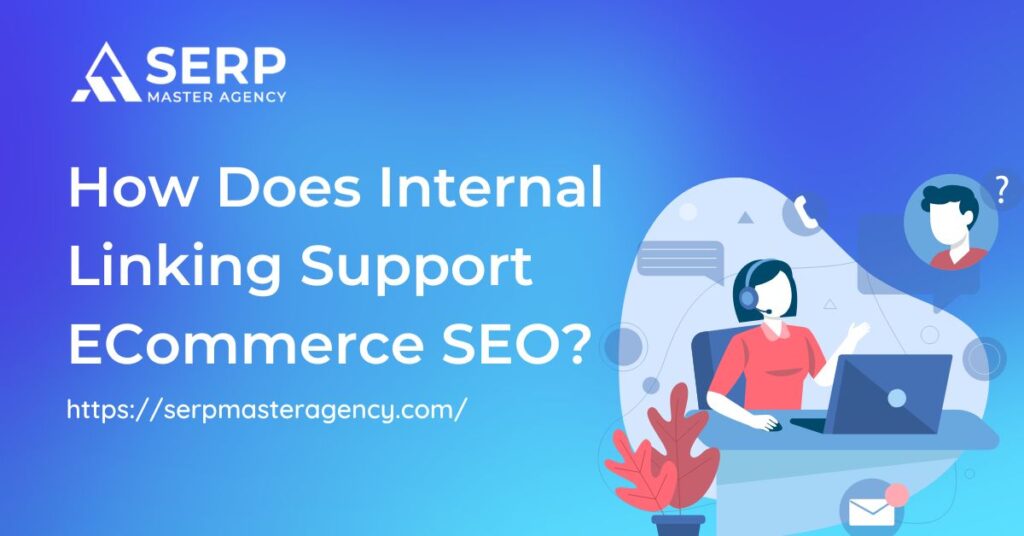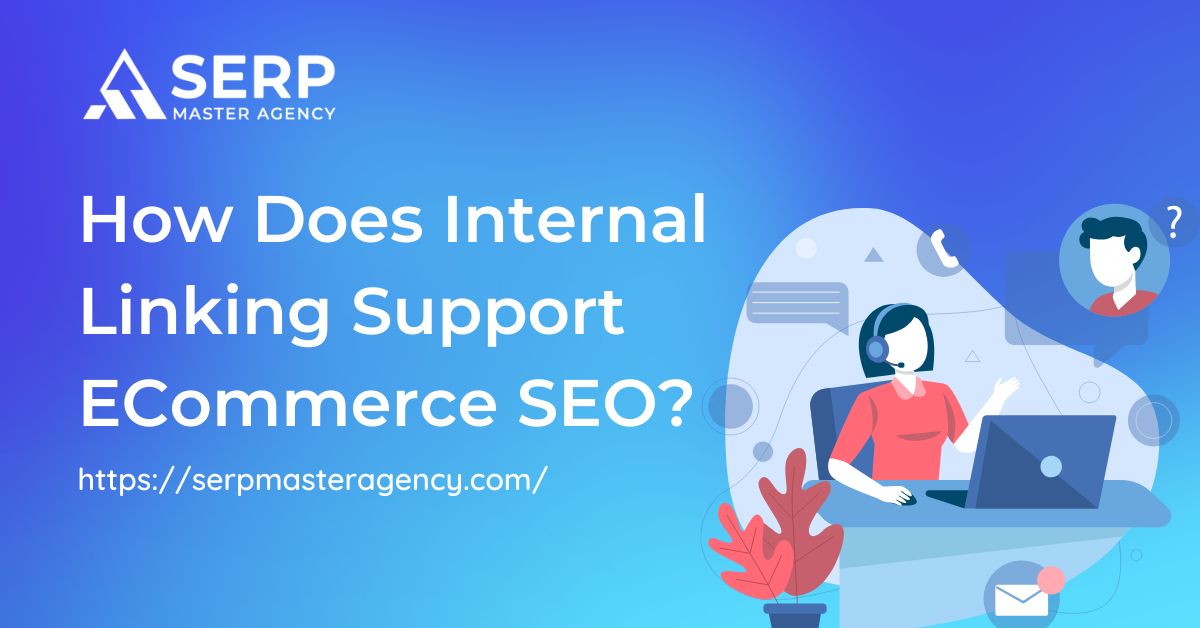Imagine walking into a huge shopping mall with no signs, no maps, and no staff to guide you. You’d probably feel lost, frustrated, and leave without buying anything.
Now, think of your ECommerce website as that shopping mall. Without clear paths to follow, your visitors will feel the same way—lost and overwhelmed. That’s where internal linking comes in.
Internal linking is a way of connecting different pages of your website through clickable links. These links help both users and search engines find their way around your site.
For ECommerce businesses, internal linking plays a big role in improving search rankings and making the site easier for customers to explore.
What Is Internal Linking and Why Does It Matter?
Basic Definition of Internal Linking
Internal linking refers to links that go from one page on your website to another page on the same site. For example, a blog post about “summer fashion” might link to a product page for sandals.
These links are part of your site’s overall structure and help guide users to more content or product pages that are relevant to what they’re looking at.These links work like signposts.
They guide visitors through your website while also telling search engines which pages are connected and which ones are most important.
At SERP Command Agency, we often explain internal linking as the backbone of smart website navigation—because when it’s done right, both users and search engines find their way more easily.
How Search Engines View Internal Links
Search engines like Google use internal links to discover and understand your website. When Google’s bots crawl your site, they follow these links to learn how your pages are related.
This helps Google figure out which pages to index and how to rank them in search results.
If some pages on your site have no internal links pointing to them, Google may have a hard time finding and indexing them.
That means they might not show up in search results at all. With smart internal linking, you help Google see your entire website more clearly, which can improve your visibility online.
The Role of Internal Linking in ECommerce SEO
Helps Google Discover More Pages
ECommerce websites often have hundreds or even thousands of pages—from product listings to category pages to blog posts. Internal linking helps Google’s crawlers find these pages more easily.
When you link from a popular page—like your home page or main category—to a deeper page—like a specific product—you’re giving Google a path to follow.
This makes it more likely that the product page will get indexed and eventually rank in search results.
Without this structure, even well-designed product pages might stay hidden from search engines.
Boosts SEO Through Anchor Text
Anchor text is the clickable part of a link. If you link using words like “summer sneakers” or “organic cotton t-shirts,” you’re giving search engines extra information about the page being linked to.
This helps improve keyword relevance for that page. When used wisely, anchor text can give Google a strong signal about what a linked page is about.
For example, if many pages link to your “leather boots” category using that exact phrase, Google is more likely to rank it for that keyword.
This kind of detail is something a skilled SEO Company often uses to help ECommerce sites rise in search rankings.
Improves Page Authority Flow
Each page on your website has its own level of SEO value or “authority.” Internal linking helps distribute that authority across your website.
Let’s say your home page has a lot of backlinks and is very strong in Google’s eyes. By linking from your home page to your “Sale Items” or “New Arrivals” page, you’re sharing some of that authority. This helps give those pages a ranking boost too.
Even blog posts can benefit. Linking from a high-traffic blog to a product collection can lift that product page’s visibility in search results.
How Internal Linking Affects User Experience
Makes Navigation Easy for Shoppers
Internal links help guide users from one product or category to another without needing to go back to the main menu.
For example, linking from a winter coat product page to matching gloves and scarves encourages users to explore more options.
This keeps people on your website longer. And the longer they stay, the more likely they are to buy something.
It also shows Google that your website is useful and engaging, which can help improve your rankings.
When users feel like they know where to go next, their shopping journey becomes smoother—and that builds trust.
Guides Users to High-Value Pages
Some pages on your site bring in more value than others. These could be your best-selling products, seasonal offers, or items with high profit margins. With internal linking, you can guide users toward those pages.
For example, if you write a blog post about gift ideas, you can link to your gift sets, top-rated products, or items currently on discount.
This moves your visitors from reading content to viewing and buying products, making internal linking a strong sales tool too.
Best Practices for Internal Linking in ECommerce
Use Descriptive Anchor Text
Instead of using vague phrases like “click here” or “read more,” it’s better to use anchor text that clearly describes where the link will take the user.
For instance, say “see our latest men’s sneakers” instead of just “shop now.”
Descriptive anchor text gives both people and search engines useful information, making the link more helpful and relevant.
Keep Links Relevant and Contextual
The best internal links are the ones that fit naturally within your content. Don’t force links where they don’t make sense.
If you’re writing a blog post about skincare routines, it makes sense to link to your facial cleansers or moisturisers—not to winter jackets.
When links are relevant to the topic at hand, they feel helpful to the reader and also make more sense to search engines.
Create Hub Pages or Category Hubs
A hub page is like a central page that links out to other related pages. In ECommerce, category pages often act as hub pages.
For example, your “Men’s Clothing” page might link out to t-shirts, jeans, jackets, and shoes.
This helps users quickly find what they’re looking for, while also helping search engines understand how your site is structured.
These hub pages are especially useful for websites with many products spread across different categories.
They bring order to your content and give your most important pages a boost by collecting and sending link authority.

Common Internal Linking Mistakes to Avoid
Too Many Links on One Page
It’s easy to think that more internal links automatically mean better results. After all, links help with navigation and SEO, so why not add as many as possible?
But when a page is stuffed with too many internal links, it starts to feel cluttered and difficult to read.
Users may feel overwhelmed trying to figure out where to click, which can lead to frustration and even cause them to leave your site.
Search engines also get mixed signals when faced with too many links. Instead of clearly understanding which pages are most important, they may struggle to prioritise them.
This can reduce the effectiveness of your internal linking strategy.
It’s better to focus on a smaller number of meaningful, well-placed links that actually add value.
A clean layout with a few strong internal connections is far more effective than a disorganised page full of random or unnecessary links.
Broken or Outdated Links
Over time, product pages may get deleted or URLs may change. If internal links don’t get updated, they can lead users to error pages. This creates a poor user experience and makes your site look neglected.
Search engines also take note of broken links and may lower your rankings as a result. It’s important to check your internal links regularly and fix or update any that are no longer working.
Many businesses use tools to scan for broken links or work with a trusted SEO Company to handle this as part of ongoing maintenance.
Conclusion
Internal linking is one of the simplest and most effective strategies for improving your ECommerce website.
It helps search engines find and rank your pages, guides users to important products, and keeps people on your site longer.
By using clear, relevant links with good anchor text, you create a better experience for both shoppers and search engines.
It’s not about adding a huge number of links, but about linking the right pages in the right places.
If you’re looking to improve your site’s visibility and user flow, internal linking is a great place to start.
At SERP Master Agency, we help ECommerce brands build strong internal structures that support long-term SEO growth—making sure every link works hard to bring better results.

Suraj Rana is a highly regarded SEO expert specializing in the dental industry. His expertise lies in crafting strategic SEO marketing plans to help new or expanding businesses increase their online visibility and attract more customers. Suraj Rana’s skills extend to improving website rankings and boosting organic search visibility, thereby enhancing web traffic and return on investment for businesses.



